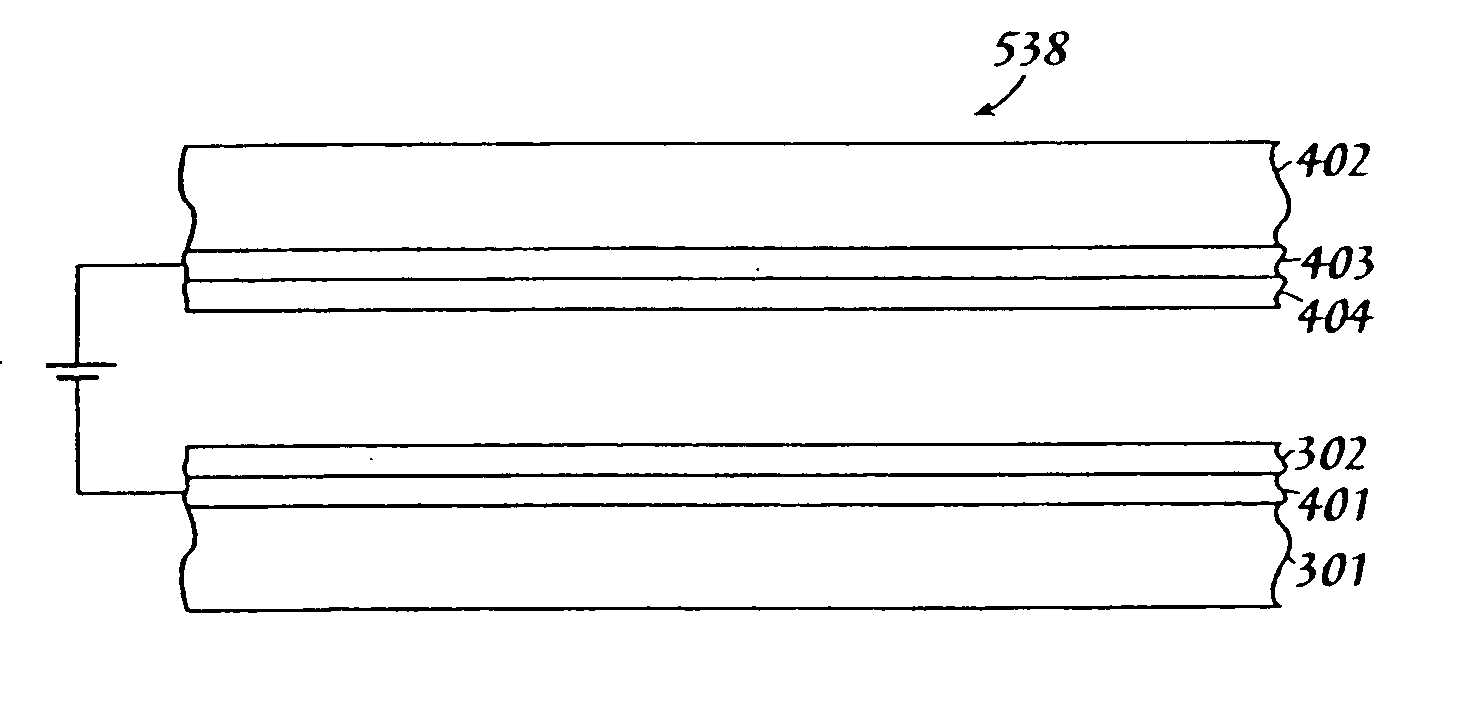Low work function cathode
a cathode and low work function technology, applied in the direction of discharge tube/lamp details, discharge tube main electrode, nanoinformatics, etc., can solve the problems of increasing the cost of cathode maintenance, affecting the quality of cathode maintenance, so as to achieve a higher degree of protection
- Summary
- Abstract
- Description
- Claims
- Application Information
AI Technical Summary
Benefits of technology
Problems solved by technology
Method used
Image
Examples
example 1
[0102] One example of a low work function metal oxide coating on carbon nanotubes is described as follows:
[0103] 1. A thin metal film (10 nm-1000 nm) is deposited onto glass substrates. TiW films are preferred. Other substrate materials can be chosen such as alumina or bare Si wafers. Conducting substrates may also be used. Many other metal films may also work, such as pure Ti or pure W. In some cases, the TiW film may not be needed. The metal film acts as a electrical contact layer. If the substrate is conducting, then the contact layer may not be needed.
[0104] 2. Two thin layers of metal are grown on top of the TiW layer to act as a catalyst layer for the CNT carbon growth (next step). First, Cu / Ni (3˜8 nm / 3-8 nm) is deposited, then Ni (3-8 nm) is deposited on the substrates. The catalyst layers are deposited using an e-beam evaporator. Other methods may also be used.
[0105] 3. Carbon nanotubes are grown on the substrates. The substrates with catalytic layer are then mounted int...
example 2
[0109] Results showed that by wet-chemically coating an oxide mixture (Na2O, MgO, Li2O, and SiOx) layer on carbon nanotubes, the field of CNT emitter for 30 mA-emission current is decreased, as indicated in FIG. 18.
[0110] One way to produce a low work function metal oxide coating on carbon nanotubes is described as follows: [0111] 1) 95-99 wt. % of water and 1-5 wt % Laponite® clay (available from Southern Clay Products, Inc) are weighted and put into a beaker. Water is added to the Laponite, but the reverse may also work. [0112] 2) A stirrer is used to mix in the beaker with a revolution of 50-200 rpm to form a gel. The stir time is 10 to 40 minutes. The Laponite is a synthetic silicate, including Na+, Li+, Mg2+, and SiO42−. [0113] 3) The 90-99 wt. % gel and 1-4 wt. % multi-walled CNTs (several sources are available), and 5-10 wt. % terpineol thinner are mixed to formulate a CNT ink in a beaker. [0114] 4) A three-roll mill is used to mix the mixture for one hour to further prepare...
example 3
[0120] Another method was used to lower the work function of the carbon nanotube emitters as well as extend the life of the emitters in field emission applications. Conventional low work function materials, such as BaO, SrO, CaO, ZrO, etc., or their compounds or mixtures, can be deposited on a CNT cathode by wet chemical deposition. These oxides can also be a protection layer for the CNTs and decrease the risk of etching by oxygen species in vacuum for prolonging lifetime of CNT emitters as well as decreasing their field emission threshold.
[0121] The process is described as follows: [0122] 1) BaO (20-50 wt. %), SrO (20-50 wt. %), and CaO (10-20 wt. %) are dissolved in water. [0123] 2) Carbon nanotubes (1-15 wt. %) from Iljin Corporation are added to the BaO:SrO:CaO water solution. The solution is stirred and heated to 40˜90° C. An intensive reaction can be observed in the mixture solution at the beginning. This may be a result of the metal oxides reacting with water to form hydroxi...
PUM
| Property | Measurement | Unit |
|---|---|---|
| work function | aaaaa | aaaaa |
| emitting surface temperature | aaaaa | aaaaa |
| temperatures | aaaaa | aaaaa |
Abstract
Description
Claims
Application Information
 Login to View More
Login to View More - R&D
- Intellectual Property
- Life Sciences
- Materials
- Tech Scout
- Unparalleled Data Quality
- Higher Quality Content
- 60% Fewer Hallucinations
Browse by: Latest US Patents, China's latest patents, Technical Efficacy Thesaurus, Application Domain, Technology Topic, Popular Technical Reports.
© 2025 PatSnap. All rights reserved.Legal|Privacy policy|Modern Slavery Act Transparency Statement|Sitemap|About US| Contact US: help@patsnap.com



